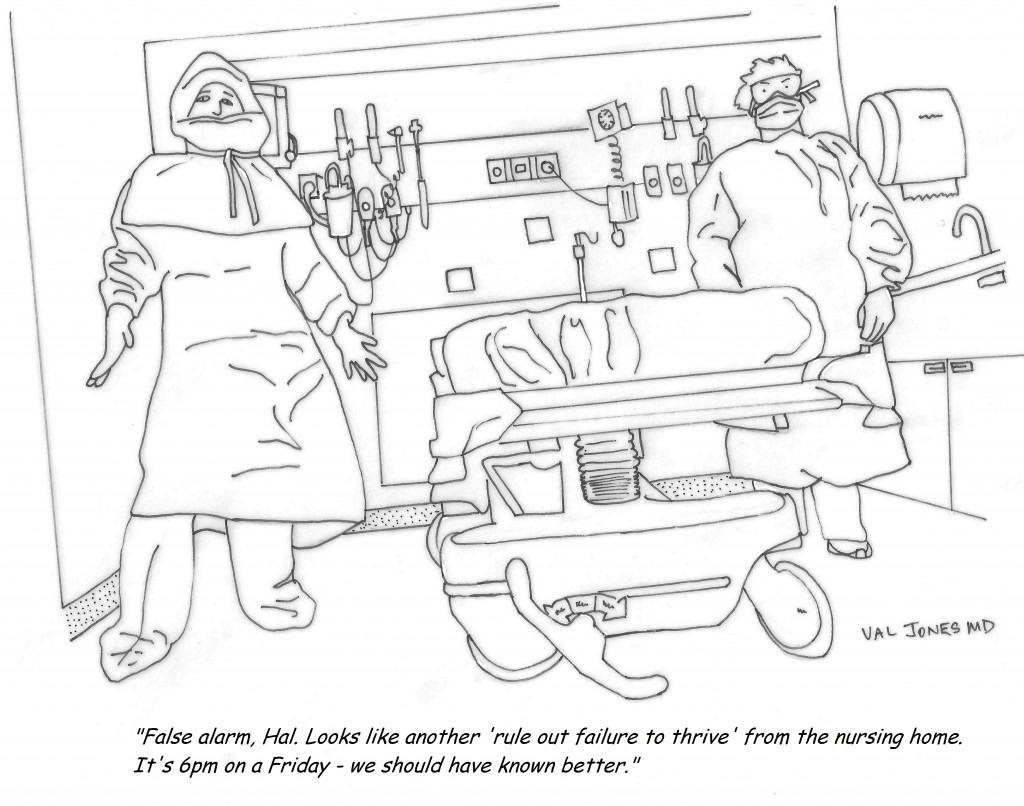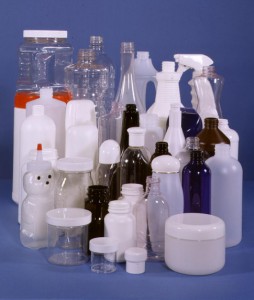Cartoon: A Typical Friday Night In The Emergency Department


 Concerns about plastic safety have been growing over the years, and the media has stepped up its efforts to expose potential dangers associated with plastic compounds such as bisphenol A (BPA) and phthalates. The problem is – there is very little scientific evidence linking plastic to human harm, and no credible evidence that our current typical exposures to BPA poses any health risks at all (so say the health agencies of the United States, Canada, the European Union, and Japan). But that’s not a very exciting story, is it?
Concerns about plastic safety have been growing over the years, and the media has stepped up its efforts to expose potential dangers associated with plastic compounds such as bisphenol A (BPA) and phthalates. The problem is – there is very little scientific evidence linking plastic to human harm, and no credible evidence that our current typical exposures to BPA poses any health risks at all (so say the health agencies of the United States, Canada, the European Union, and Japan). But that’s not a very exciting story, is it?
Instead, what we often hear in the news is that microwaving our plastic containers or drinking from plastic water bottles could be dangerous to our health… and that BPA-free containers are better for baby. But where did the media come up with these ideas? I asked Dr. Chuck McKay, a toxicologist and emergency medicine physician at the University of Connecticut, to explain how safe levels of exposure (to various chemicals) are determined, and how to know if news reports are based on scientific evidence. I hope you’ll listen in to this educational Webinar.
Some of my favorite take-home messages from the Webinar include what I call “just becauses”:
1. Just because you can find a substance in your urine doesn’t mean it’s harmful. (Asparagus anyone?)
2. Just because an animal reacts to a substance, doesn’t mean that humans will. (How often have you caught a cold from your dog?)
3. Just because extreme doses of a substance can cause harm, doesn’t mean that tiny doses also cause harm. (Consider radiation exposure from riding in an airplane versus being near ground zero of a nuclear strike).
4. Just because something has a theoretical potential to harm, doesn’t mean it will. (Will you really be attacked by a shark in 2 feet of water at your local beach?)
5. Just because someone conducted a research study doesn’t mean their findings are accurate. (Do you really believe the Cosmo polls? There’s a lot of junk science out there!)
For an excellent review article of the high-quality science behind plastic safety, please check out this link. In the end, there are far more important health concerns to worry about than potential exposure to plastic compounds. And throwing out all your plastic containers may not even reduce your exposure to BPA anyway… A recent study found that people had higher concentrations of BPA in their urine when they followed a plastic-free, organic diet! Their exposure was actually traced to ground cinnamon, coriander, and cayenne pepper. Who knew?
 A friend of mine had a bad reaction to a heart medicine, dropping her blood pressure to as low as 76/49 as a result. She was feeling understandably dizzy but didn’t want to go to the ER so she asked me if there was anything she could do at home to help raise her blood pressure. I recommended that she drink a large volume of water and take some salt tablets. She had no salt in pill form, and didn’t want to take it straight out of the shaker so asked if there was any other way to get the salt in. I asked her to describe the contents of her refrigerator and pantry, and made a mental note of what I thought had the highest salt content.
A friend of mine had a bad reaction to a heart medicine, dropping her blood pressure to as low as 76/49 as a result. She was feeling understandably dizzy but didn’t want to go to the ER so she asked me if there was anything she could do at home to help raise her blood pressure. I recommended that she drink a large volume of water and take some salt tablets. She had no salt in pill form, and didn’t want to take it straight out of the shaker so asked if there was any other way to get the salt in. I asked her to describe the contents of her refrigerator and pantry, and made a mental note of what I thought had the highest salt content.
My friend thought that potato chips might do the trick, and was surprised when I told her that she had something almost ten times saltier at her disposal. Four ounces of prosciutto contained almost 2g of sodium, an entire day’s worth of salt! So she dutifully consumed the sliced meat, washing it down with about a liter of water. Two hours later she was back up to 98/66 and six hours later her blood pressure had returned to a healthy 116/83.
This was a rare case where a “high salt diet” had its benefits. In the case of ham versus hypotension, ham won… and saved my friend a costly, and unnecessary ER visit. Let’s hear it for deli meat!
The start of January has some exciting new technologies on the horizon. Recently, Wahoo Fitness announced their new product, BlueHR — a fitness heart rate monitor — can sync to your iPhone 4s via bluetooth and without the need for addition adaptors.
All users have to do with the BlueHR device is to strap it around their sternum, and they will be able to monitor stats such as their heart rate and the number of calories they are burning via their smartphone. It currently uses Bluetooth 4.0 technology, and as such, the only smartphone that currently has that capability is the iPhone 4S.
We wrote an in-depth article about Bluetooth 4.0 when the iPhone 4s was released, commenting on how it could be a boom for mobile health devices due to the following features of the protocol: Read more »
*This blog post was originally published at iMedicalApps*
It’s no secret that doctors are disappointed with the way that the U.S. healthcare system is evolving. Most feel helpless about improving their work conditions or solving technical problems in patient care. Fortunately one young medical student was undeterred by the mountain of disappointment carried by his senior clinician mentors…
I am proud to be a part of the American Resident Project an initiative that promotes the writing of medical students residents and new physicians as they explore ideas for transforming American health care delivery. I recently had the opportunity to interview three of the writing fellows about how to…
Book Review: Is Empathy Learned By Faking It Till It’s Real?

I m often asked to do book reviews on my blog and I rarely agree to them. This is because it takes me a long time to read a book and then if I don t enjoy it I figure the author would rather me remain silent than publish my…
The Spirit Of The Place: Samuel Shem’s New Book May Depress You

When I was in medical school I read Samuel Shem s House Of God as a right of passage. At the time I found it to be a cynical yet eerily accurate portrayal of the underbelly of academic medicine. I gained comfort from its gallows humor and it made me…
Eat To Save Your Life: Another Half-True Diet Book

I am hesitant to review diet books because they are so often a tangled mess of fact and fiction. Teasing out their truth from falsehood is about as exhausting as delousing a long-haired elementary school student. However after being approached by the authors’ PR agency with the promise of a…